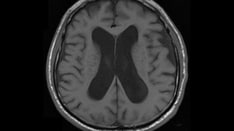Find the latest COVID-19 news and guidance in Medscape's Coronavirus Resource Center.
This transcript has been edited for clarity.
Hi. I'm Dr Drew Ramsey, assistant clinical professor of psychiatry at Columbia University and a member of the Medscape Psychiatry editorial board. Welcome back to the Brain Food vlog. Today I want to check in with you about Zoom-side manner.
Everyone saw the Centers for Disease Control and Prevention's data from June that 40% of Americans are reporting at least one adverse mental or behavioral health condition and, most concernedly, 11% of Americans are seriously considering suicide. We're going to be very much in demand as a profession, so we're going to have to be as good or better than we've ever been before.
When we first started quarantine during the COVID-19 pandemic, I released a video encouraging you to engage in telepsychiatry. This was not only because we had to, but also as a challenge to see if we could be better given that we've always had this bias that telepsychiatry isn't as good. I had some tips in there that we can now all admit weren't great. For example, I recommended using noise-canceling headphones. However, after a few months of wearing my own headphones, my ears started to hurt (although perhaps your ears aren't as big as mine).
I think we've all adapted as we've spent hundreds if not thousands of hours seeing patients clinically. Therefore, I wanted to talk about a couple of my observations from that process, particularly about Zoom-side manner, and I hope you'll share your own in the comments section.
In some ways, being a physician and a psychiatrist is what it has always been; we're still asked to be a good doctor, to actively listen, to give positive feedback to our patients, and keep doing what we do in psychiatry. But I wonder whether we could do it better.
One part of Zoom-side manner that's different from bedside manner is that we require more and different types of self-care as clinicians. There's so much that we've lost in terms of engaging with colleagues, or if you're in a hospital, just getting a quick curbside. That's just different now as we are all in what I've been calling our Zoom cage. So I've found that self-care and taking breaks is much more important, especially now with needing to take a bio-break from the screen for the first time. You can really sit right here in front of your screen, as I have for hours and hours just like you have, and not engage in good self-care. Whatever that means to you, do more of it. For me, I used to ride from my office back to my house on my bike. It was a time for me to just process a lot and to be with myself. Now, I can finish a really emotional and deep session, walk out my office door, and there are my wife and kids, and it's time to make dinner or whatever. I've found that to be really challenging.
I don't know how all of you are dealing with that, but I've really tried to put in some transitions. Maybe that means getting to my Zoom cage a little earlier to give myself a little time to settle in. Certainly, it includes making sure to go outside in a more intentional way. I think it's important to consider how you're going to transition, how to take good care of yourself, and when can you take those bio-breaks.
I think there are a lot of pros to the telepsychiatry format. There's an intimacy to sitting with patients that we've lost, but there's also an intimacy that we've gained in terms of being inside someone's home. I've seen a lot of patients' pets. I saw a patient who was on a road trip and sitting in the first car that she'd purchased, which was a major treatment goal for her.
There are other moments that I think are getting created in this Zoom or digital format that we should really pay attention to. I've had group meetings where two or three therapists have met with an entire family. It was so easy to arrange that it made me wonder why I hadn't done that before using telemedicine.
Of course, the other pro is the efficiency. There's no time required for patients to travel to see us. The barrier to see someone for evaluation is in some ways much lower. There's more anonymity, which removes the barrier that there was before of getting to someone's office and perhaps feeling that stigma of seeing a mental health professional.
And the fact of not needing to go anywhere extends to us clinicians as well. There are cons that come along with that, of course, including the fatigue and a sense of isolation that I think we're feeling as clinicians.
Boundaries are also something that's so important to us in psychiatry and in mental health. How do we allow patients to be very personally connected with us, and at the same time, not to share too much about ourselves? That's really changed, as we're all experiencing a collective trauma together, not only in dealing with COVID-19 and quarantine, but also with what's happening in terms of systemic racism and inequality, and the multiple high-profile murders by police officers in America of Black men and women. That's all brewing around us and in some ways making it very challenging to keep boundaries.
What I found to be helpful is being consistent in my location and to really try to transition into my frame of mind of doing work and being a psychiatrist. It's important to orient patients to our protocols of how we're going to communicate with them if there are issues, and determine who's calling who. Do you text? Do you call? It is especially important now, as our intake and evaluation process has evolved or changed, to be really clear with patients how you communicate with them initially about what those first steps are to becoming your patient. I think that's a new part of Zoom-side manner.
The last piece of advice is simply not to get too loose, which I think is hard. This is an extremely weird moment in which we're all involved. We're seeing patients in a more personal, almost voyeuristic way in which we're not just hearing about their life but we're actually inside and seeing it at times. And we're also talking about COVID together, which I think brings us much closer and creates an alliance with our patients. It's also something that we have to watch in terms of getting a little bit loose, especially as we're more socially deprived.
Those are some thoughts I have on Zoom-side manner. But mostly I wanted to post a video to say, hang in there. We're in this together. America needs psychiatrists and mental health professionals like never before. I think the more we can support each other and communicate about the new challenges and opportunities of what's ahead of us, the better we're going to do.
I'm Dr Drew Ramsey. Thanks for hanging out with me a little bit here at the Brain Food vlog. If there are any thoughts you have about how to have a better Zoom-side manner that you want to add to the conversation, please drop it in the comments section. Thanks.
Follow Medscape on Facebook, Twitter, Instagram, and YouTube
Medscape Psychiatry © 2020
Cite this: How Is Your 'Zoom-side Manner'? - Medscape - Oct 27, 2020.











Comments